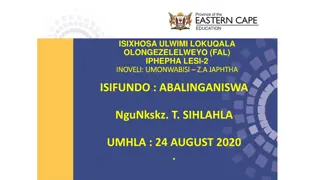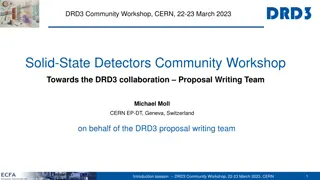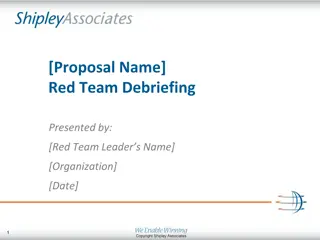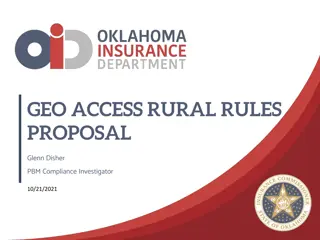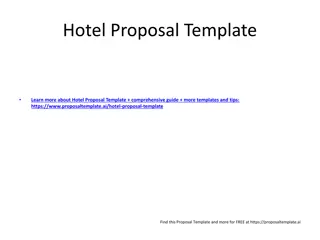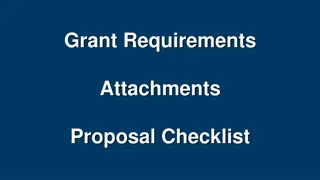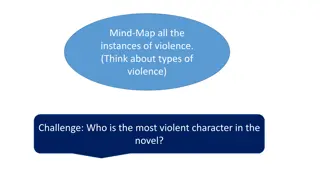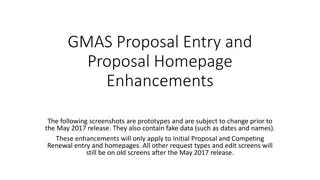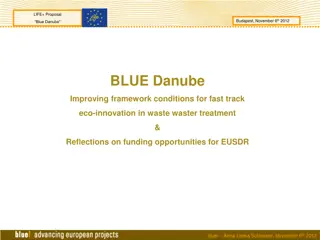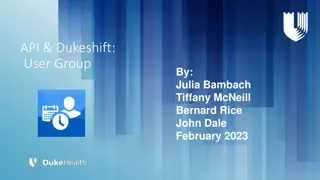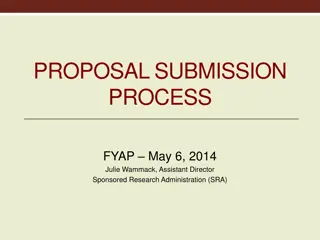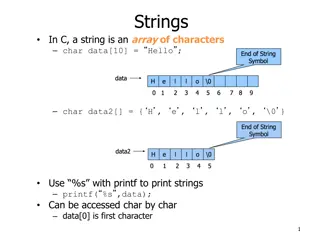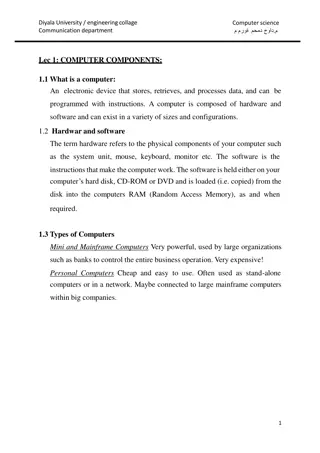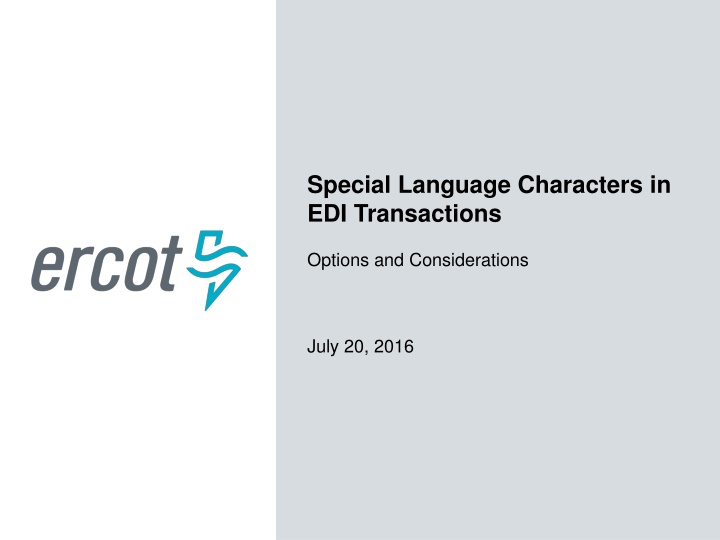
Special Characters in EDI Transactions: Options & Considerations
Explore the options and considerations regarding special language characters in Electronic Data Interchange (EDI) transactions. Learn about ERCOT's recognition of ANSI accepted characters, TX.SET guidelines, and the proposed system changes. Evaluate the pros and cons of continuing manual workarounds, updating systems to reject special characters, or translating them into normal characters. Stay informed about the implications for ERCOT, CRs, and TDSPs in processing transactions with special language characters.
Download Presentation

Please find below an Image/Link to download the presentation.
The content on the website is provided AS IS for your information and personal use only. It may not be sold, licensed, or shared on other websites without obtaining consent from the author. If you encounter any issues during the download, it is possible that the publisher has removed the file from their server.
You are allowed to download the files provided on this website for personal or commercial use, subject to the condition that they are used lawfully. All files are the property of their respective owners.
The content on the website is provided AS IS for your information and personal use only. It may not be sold, licensed, or shared on other websites without obtaining consent from the author.
E N D
Presentation Transcript
Special Language Characters in EDI Transactions Options and Considerations July 20, 2016
Background ERCOT currently recognizes and forwards all ANSI accepted characters including the Select Language characters. The following protocol language excludes these: Nodal Protocol Section19.5.1 Alphanumeric Field(s) (1) For use on an alphanumeric field, Texas Standard Electronic Transaction (TX SET) recognizes all characters within the basic character set. Within the extended character set, TX SET recognizes all character sets except all select language characters found in Section (4) of American National Standards Institute Accredited Standards Committee X12 (ANSI ASC X12) standards application. Segment/data element gray box guidelines for alphanumeric fields take priority over ANSI ASC X12 standards where the TX SET guidelines further limit acceptable values for a segment/data element. TX SET guidelines cannot extend the acceptable values to characters that are not allowed by ANSI ASC X12 standards for a segment/data element. 2 PUBLIC
Background The TX SET Working Group is asking ERCOT to make a system change because the TDSPs cannot accept these characters. Some TDSPs are manually updating the data in their systems to allow the transactions to process. One TDSP is rejecting the transactions with a transaction type that cannot be forwarded to the CR. In this case, ERCOT is manually monitoring for these rejection transactions and logging MarkeTrak issues to the submitting CR. The CRs are instructed to resubmit their transaction without the special character. From February to April of 2016 ERCOT received 54 transactions with special language characters. 3 PUBLIC
Options Considered OPTION 1 : Continue with existing manual workaround. Pros: 1. 2. No systems impacts. Volume of impacted transactions is low. Cons: 1. ERCOT is not in alignment with the spirit of the Protocols. 2. Manual effort for ERCOT, CRs, and TDSPs 4 PUBLIC
Options Considered OPTION 2 : Update ERCOT s Systems to reject any transaction containing the special language characters. Pros: 1. Aligns ERCOT with spirit of protocols, as written. Cons: 1. Requires TX SET release and Market testing. 2. TX SET releases take between 12 and 18 months, therefore extending the period of time that special characters are forwarded. 3. Requires CR system modifications. 5 PUBLIC
Options Considered OPTION 3 : Update ERCOT s Systems to translate special language characters into normal characters. Pros: 1. Aligns ERCOT with the spirit of the protocol by preventing the forwarding of special characters to the TDSPs. 2. 3. Removes need for CR system modifications. Can be accomplished fairly quickly, when compared to a TX SET Release. Removes manual workaround. Cons: 1. Manipulation of data sent to ERCOT by the CRs. 4. Note: ERCOT currently translates lower case letters to upper case letters prior to forwarding to the TDSPs. 6 PUBLIC
Options Considered OPTION 4 : Implement Option 3 in the short term, followed by Option 2 during the next TX SET release. Pros: 1. Allows ERCOT to align with Protocols in the short term, while still implementing a more comprehensive long term solution. Allows CRs time to make modifications to their systems. 2. Cons: 1. Involves 2 code changes. 7 PUBLIC
Additional Consideration ERCOT is proposing removal of the specified language from the Protocols. This language is more detailed than the rest of Protocols and is better placed in the TX SET Guides. The Protocols reference the TX SET Guides for detailed information on transaction validations. The same paragraph from the Protocols is already in each of the TX SET Guides. ERCOT is proposing modifications of the language in the TX SET Guides to clearly reflect which characters are accepted and which are rejected. CR system changes may be more extensive than initially anticipated due to solutions allowing end use customer data entry. 8 PUBLIC


